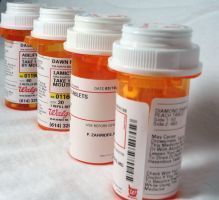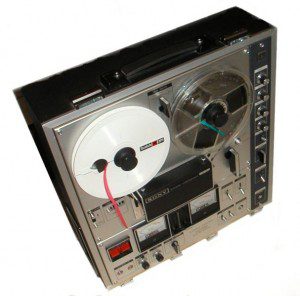 I’ve been part of too many heated discussions lately on bipolar disorder among kids. Because I know of several cases where it’s been sheer heartache for the parents, it’s difficult for me not to respond defensively at folks who dismiss all child mood disorders as proof of an overmedicated nation. So I thought I’d republish excerpts from Jennifer Egan’s excellent, comprehensive article that ran awhile back in the New York Times Magazine.She profiles several different families as well talks to experts in the field, asking doctors how they go about diagnosing a child with bipolar disorder and why the percentage increase among kids.
I’ve been part of too many heated discussions lately on bipolar disorder among kids. Because I know of several cases where it’s been sheer heartache for the parents, it’s difficult for me not to respond defensively at folks who dismiss all child mood disorders as proof of an overmedicated nation. So I thought I’d republish excerpts from Jennifer Egan’s excellent, comprehensive article that ran awhile back in the New York Times Magazine.She profiles several different families as well talks to experts in the field, asking doctors how they go about diagnosing a child with bipolar disorder and why the percentage increase among kids.
You can get to her article by clicking here. I have excerpted more of the medical paragraphs. But the descriptions of the kids’ symptoms is worth reading.
The Diagnostic and Statistical Manual of Mental Disorders (the current edition is referred to as D.S.M.-IV) describes bipolar disorder as a condition whose average age of onset is 20, but virtually all the leaders in the field now say they believe it exists in children too. What they don’t agree on is what, exactly, characterizes the disease in kids, or how prevalent it is; some call it rare, while others say it is common. Many clinicians say the illness looks significantly different in children than in adults, but the question of how it differs, or what diagnostic terms like “grandiosity,” “elevated mood” or “flight of ideas” (all potential symptoms of adult bipolar disorder) even mean when you’re talking about kids, leaves room for interpretation. For example, it’s normal for children to pretend that they are superheroes, or believe that they can run faster than cars, whereas in an adult, these convictions would be signs of grandiosity. Equally unclear is whether a child who is identified as having a bipolar disorder will grow up to be a bipolar adult. Work on the D.S.M.-V is under way, and discussions have begun on how to address the issue of bipolar children.
As Ellen Leibenluft, who runs the pediatric bipolar-research program at the National Institute of Mental Health, told me, “There definitely will be — and needs to be — more description of what bipolar disorder looks like in children, how one diagnoses it and some of the challenges.”
A study last fall measured a fortyfold increase in the number of doctor visits between 1994 and 2003 by children and adolescents said to have bipolar disorder, and the number has likely risen further. Most doctors I spoke with found the “fortyfold increase” misleading, since the number of bipolar kids at the beginning of the study was virtually zero and by the end of the study amounted to fewer than 7 percent of all mental-health disorders identified in children. Many also said that because bipolar children are often severely ill, they can proportionately account for more doctors’ visits than children with other psychiatric complaints, like A.D.H.D. or Anxiety Disorder. Still, nearly every clinician I spoke to said that bipolar illness is being overdiagnosed in kids. In Leibenluft’s studies at the National Institute of Mental Health, only 20 percent of children identified with bipolar disorder are found to meet the strict criteria for the disease. Breck Borcherding, a pediatric psychiatrist in private practice in the Washington area, said: “Every time one of my kids goes into the hospital, they come out with a bipolar diagnosis. It’s very frustrating.”
There are many possible reasons for the sudden frenzy of pediatric bipolar diagnoses. First, a critical shortage of child psychiatrists, especially in rural areas, means that many children are being seen by adult psychiatrists or — more often — by family doctors, who may lack expertise in child psychiatry. Managed care usually pays for a single, brief psychiatric evaluation (and it strictly limits the number of therapy appointments a year) — not nearly enough time, many say, to accurately diagnose a condition in a mentally ill child.
Then there is “The Bipolar Child,” a successful book published by the psychiatrist Demitri Papolos and his wife, Janice, in 1999, and referred to by more than one parent I spoke to as a “bible.” The Papoloses’ description of pediatric bipolar disorder was amassed partly by using responses to an online questionnaire filled out by hundreds of parents on an electronic mailing list, who said they believed their children were bipolar (and who often had strong family histories of the disease). The Papoloses’ diagnostic criteria include some idiosyncratic items — a severe craving for carbohydrates, for example — that are found nowhere in D.S.M.-IV. Nevertheless, many parents walk into doctors’ offices having already read “The Bipolar Child” and concluded that their children are bipolar. Because doctors rely heavily on parental reports when diagnosing disorders in children, these “prediagnoses” may have an impact on the outcome.
And of course, there are pressures and blandishments from the pharmaceutical industry, which stands to profit mightily from the expensive drugs — often used in combination — that are prescribed for bipolar illness, despite the fact that very few of these drugs have been approved for use in children.
For all the possible overdiagnosing of pediatric bipolar disorder, however, many in the field also say that a lot of truly bipolar children who could benefit from therapy are falling through the cracks. This is a critical issue; studies clearly show that the longer bipolar disorder goes untreated, the worse a person’s long-term prognosis. Between 10 and 15 percent of those suffering from bipolar disorder end up committing suicide.
Some studies suggest that bipolar disorder may actually be on the rise among young people. One intriguing hypothesis involves a genetic phenomenon known as “anticipation,” in which genes become more concentrated over generations, bringing a stronger form and earlier onset of an illness with each successive generation. Another theory is “assortative mating,” in which a more mobile and fluid society, like ours, enables the coupling of people whose mutual attraction might be partly due to a shared genetic disposition to something like bipolar disorder, thus concentrating the genetic load in their offspring.
To continue reading the article click here.

